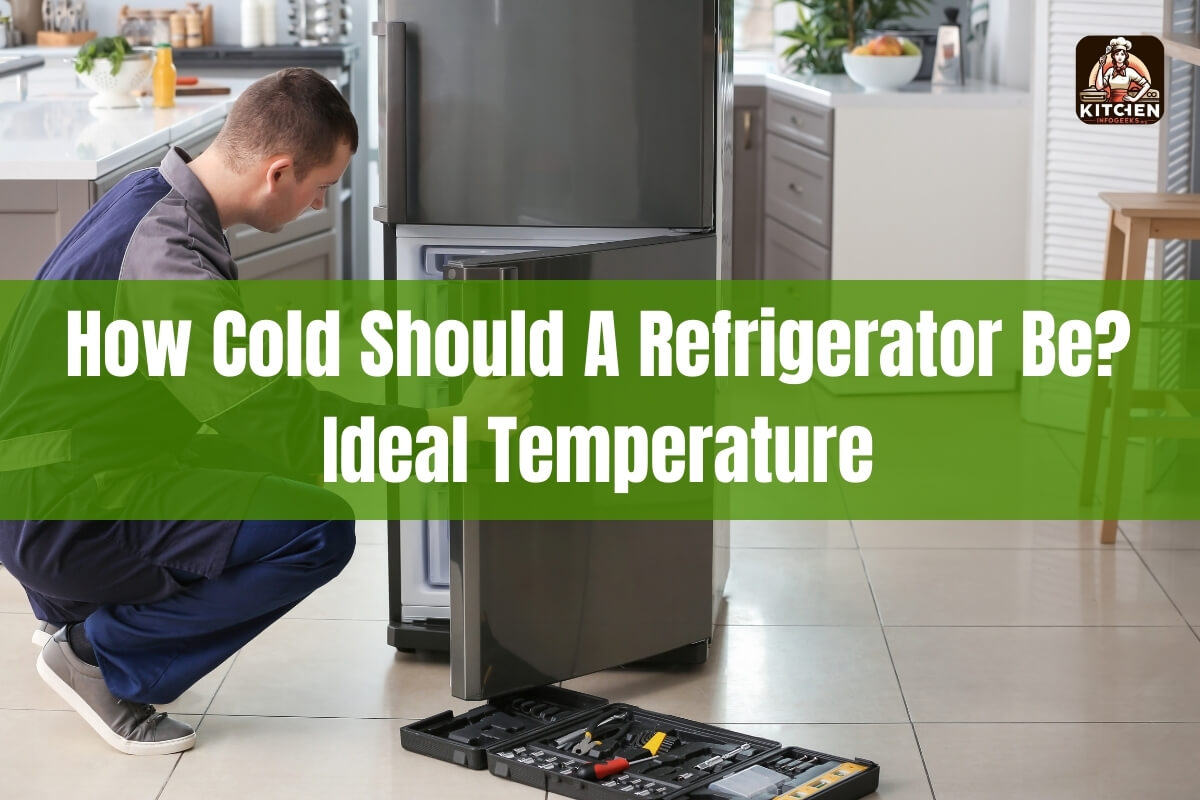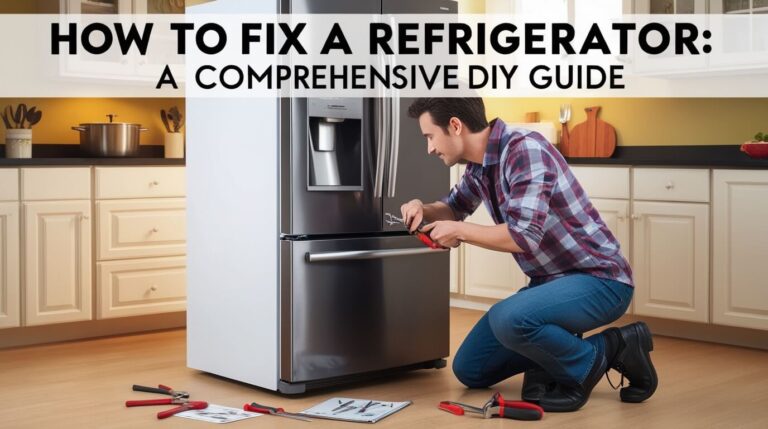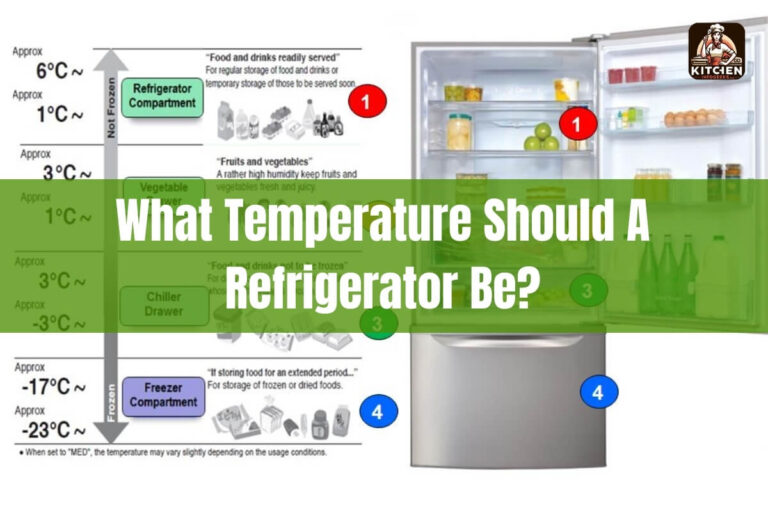
Keeping your refrigerator at the proper temperature is crucial for preserving the freshness and safety of your food. But what is the ideal refrigerator temperature, and how can you ensure your fridge is running at the optimal setting? In this comprehensive guide, we’ll dive into the recommended refrigerator temperature range, explore factors that affect cooling, and share tips to help you maintain the perfect chilly environment for your perishable goods.
The ideal refrigerator temperature is 37°F (3°C), according to food safety experts. This “sweet spot” strikes the perfect balance between food preservation and energy efficiency. We’ll explain why this temperature is recommended, the risks of running your fridge too hot or too cold, and provide practical advice to help you achieve and monitor the optimal setting.
Recommended Refrigerator Temperature Range
FDA Guidelines
The U.S. Food and Drug Administration (FDA) provides clear guidelines on recommended refrigerator and freezer temperatures. They advise keeping your refrigerator at or below 40°F (4°C) and your freezer at or below 0°F (-18°C).
Maintaining these temperature ranges is crucial for food safety. Bacteria can grow rapidly in the “Danger Zone” between 40°F and 140°F (4°C and 60°C), doubling in number in as little as 20 minutes. To prevent the risk of foodborne illness, the FDA recommends never leaving perishable foods out of refrigeration for more than 2 hours (1 hour if the ambient temperature is above 90°F or 32°C).
Ideal Refrigerator Temperature
While the FDA’s 40°F (4°C) maximum is a good general guideline, the optimal refrigerator temperature for food freshness and quality is actually around 37°F (3°C). This slightly lower temperature helps preserve the taste, texture, and nutritional value of your perishable items for longer.
Temperatures that are too low, however, can also be problematic. If your fridge dips below 32°F (0°C), it can start to freeze your food, leading to ice crystals, dried-out textures, and potential food waste. The sweet spot lies between 33°F and 40°F (0.5°C and 4°C), with 37°F (3°C) being the ideal temperature to strive for.
Factors Affecting Refrigerator Temperature
Refrigerator Settings
Most standard refrigerators don’t allow you to set a specific temperature. Instead, they have a numeric dial or slider that ranges from 1 to 5 or low to high. Even higher-end models with digital temperature controls aren’t always perfectly accurate.
This is why it’s essential to use a reliable appliance thermometer to monitor the actual temperature inside your fridge. Place the thermometer in the center of the main compartment, away from the door, to get the most accurate reading. Adjust the temperature setting as needed to maintain that perfect 37°F (3°C) sweet spot.
Maintaining Optimal Temperature
Keeping your refrigerator at the ideal temperature isn’t just about the thermostat setting. There are several other factors that can impact cooling efficiency and temperature stability:
- Cleanliness: Dust and dirt buildup on the condenser coils (located on the back or bottom of the fridge) can hinder heat dissipation, causing the compressor to work harder and temperatures to rise.
- Airflow: Make sure there’s adequate space (1-2 inches) between the back of the fridge and the wall to allow proper air circulation.
- Door openings: Every time you open the refrigerator door, cold air escapes, and the interior temperature rises. Try to limit door openings and keep them as brief as possible.
- Ambient temperature: The room temperature where your fridge is located can affect its ability to maintain the ideal 37°F (3°C). Aim to place it in a cool, well-ventilated area, away from heat sources.
By keeping your refrigerator clean, allowing for proper airflow, and minimizing door openings, you can help ensure it runs at the optimal temperature consistently.
Dealing with Power Outages
Power outages can pose a significant threat to the temperature and safety of the food in your refrigerator. If the power goes out, you’ll want to take immediate steps to preserve the cold.
First, resist the urge to open the refrigerator door. A fully closed fridge will maintain its temperature for about 4 hours, while a full freezer can stay frozen for up to 48 hours, as long as the doors remain shut.
To further extend the cold, you can place ice packs or containers of frozen water in the fridge and freezer. This will help keep the internal temperatures low for longer. Monitor the thermometer closely, and if the fridge or freezer reaches temperatures above 40°F (4°C), it’s time to start discarding perishable items for safety.
Once the power is restored, check the temperatures again before restocking. As long as the fridge and freezer stayed below 40°F (4°C), your food should still be safe to consume. However, if temperatures climbed higher, it’s best to err on the side of caution and discard any questionable items.
Crisper Drawer Usage
Your refrigerator’s crisper drawers serve an important role in maintaining optimal humidity and ethylene gas levels to keep your fruits and vegetables fresher for longer.
The humidity-controlled crisper drawer for vegetables should be kept closed to trap moisture and prevent wilting. Conversely, the fruit drawer should be kept open to allow the release of ethylene gas, which can cause premature ripening and spoilage when trapped.
It’s also crucial to separate ethylene-producing items, like ripe bananas or apples, from other produce. This gas can accelerate the decay of more delicate fruits and veggies, so keep them in separate crisper drawers or away from each other entirely.
Proper crisper drawer management, in tandem with the ideal 37°F (3°C) refrigerator temperature, can significantly extend the shelf life of your fresh produce.
When to Replace a Refrigerator
While regular maintenance and temperature monitoring can help keep your fridge running efficiently, there may come a time when it’s simply time for an upgrade. Some signs it may be time to replace your refrigerator include:
- Inconsistent or unreliable temperatures: If your fridge is struggling to maintain the optimal 37°F (3°C) range, even with adjustments, it could indicate a larger issue with the cooling system.
- Excessive energy consumption: Older, less efficient refrigerators can drive up your utility bills. Upgrading to a modern, ENERGY STAR-certified model can provide significant cost savings.
- Frequent breakdowns or repairs: Once your fridge starts needing regular maintenance or repair, it may be more cost-effective in the long run to invest in a new, more reliable appliance.
- Outdated features: If your current refrigerator lacks essential modern conveniences like digital temperature controls, smart home integration, or energy-efficient LED lighting, it may be time for an upgrade.
When shopping for a new refrigerator, pay close attention to the temperature management features and look for models that allow you to easily set and monitor the ideal 37°F (3°C) temperature.
Conclusion
Maintaining the optimal 37°F (3°C) refrigerator temperature is crucial for preserving the freshness, quality, and safety of your perishable foods. By understanding the FDA’s guidelines, recognizing the factors that affect cooling, and employing practical strategies to monitor and manage your fridge’s temperature, you can ensure your refrigerator is running at peak performance.
Remember to use a reliable appliance thermometer, keep your condenser coils clean, limit door openings, and properly utilize the crisper drawers. And if your fridge is struggling to maintain the ideal temperature range, it may be time to consider upgrading to a newer, more energy-efficient model.
By following these best practices, you can maximize the lifespan of your refrigerator and keep your food tasting its best. Stay cool, and enjoy the peace of mind that comes with knowing your refrigerator is operating at the perfect temperature.






